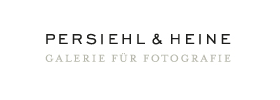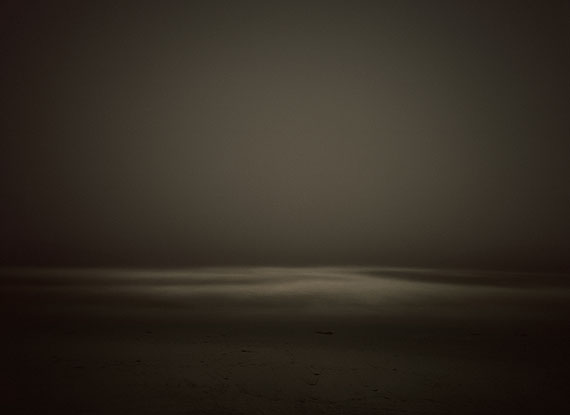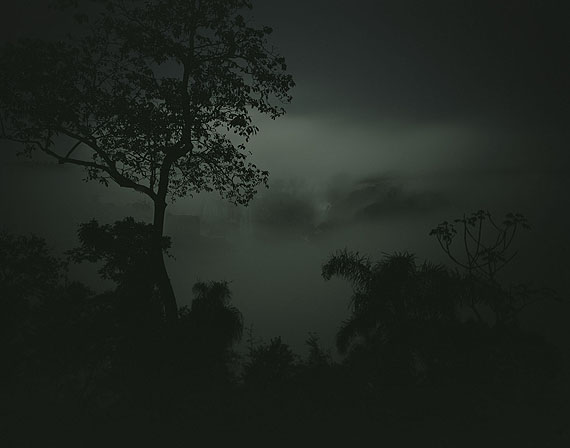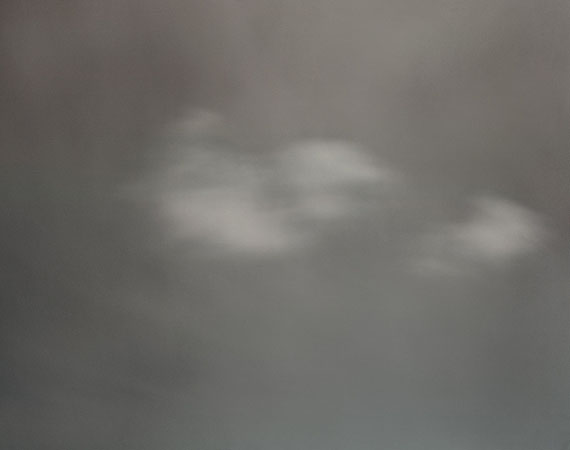
Michael Schnabel »
Nachtstücke
Exhibition: 20 Mar – 31 May 2013

Persiehl & Heine
Bergstr. 11
20095 Hamburg
+49 (0)40-32 63 21
info@persiehl-heine.de
www.persiehl-heine.de
Tue-Fri 11-18, Sat 11-16

Michael Schnabel
Nachtstücke
Exhibition: March 20 – May 31, 2013
Michael Schnabel is well-known for a photographic approach that explores the outer limits of the visible. It is well-known that, in his Stille Berge (‘Serene Mountains’) series and other night images, precisely these sublime marvels of the landscape were not illuminated by light but that he drew (in both senses of the word) them out of the darkness. Using an exposure time of about an hour, his large-format camera was able to gather just the amount of available light needed for the form of a mountain like the Bristen to be composed of finely shaded tones of darkness.
It is immediately evident that this photographer is not motivated by some sort of sentimental striving to create images combining conventional ideas of beauty with awe-inspiring subjects. His mountains, oceans and museums, as well as his images of the sky and clouds, have nothing to do with postcard aesthetics. The pictures in this catalogue reproduced using high-end offset printing also give only a mere inkling of the tactile qualities of the photographs to be seen in this exhibition. Just like paintings, Schnabel’s pictures have to be seen in the flesh. This is an absolute ‘must.’
Mountains, water, the sky and, most recently, museum interiors are the preferred subjects of the photographer, Michael Schnabel. Light and the absence of light comprise the formal framework of these works that – as each individual work – portray an optical phenomenon. The aim is not some form of scenic representation but rather absolute concentration on the photograph as such, something pure and unadulterated. If, when considering these works, one puts aside their subject matter for a moment in favor of their epistemological aspects, it becomes evident that Michael Schnabel distances himself from the objects that he depicts. Nonetheless, the object is never deprived of its concreteness but rather is subjected to unflinching scrutiny.
In an interview, Michael Schnabel has said the following: “I wanted to create an image of mountains that would get away from the ways that they had been seen before.”
This ‘getting away’ from the traditional modes of aesthetic seeing led directly to a world of abstract photography independent of the subject matter. The natural world that Schnabel requires – because the appearance of objects is his point of departure – is nothing more than a vehicle in these works. His subject is shown in a particular light situation that conceals more than it reveals. As a rule, a mountain is reduced to a close-up view that may have its own particular fascination; yet, in the final analysis, what do these pictures actually tell us about the mountains themselves, their location or the vegetation on their lower slopes?
These are not nature photographs that aim at enabling the viewer to identify a particular object with a specific location in the natural world.
Going beyond the epistemological approach, it is possible to make the following general observation about these pictures: they are fascinating because they are so different. This photography portrays itself. This is its substantive connection with painting. If they were painted, these images would lose their authenticity. These photographs have an elementary quality. They simply are.
Tayfun Belgin – Osthaus Museum, Hagen�

Michael Schnabel
Nachtstücke
Ausstellung: 20.3. bis 31.5.2013
Michael Schnabel ist dafür bekannt, dass er mit seiner Fotografie an die Grenzen des Sichtbaren geht. Er ist dafür bekannt, dass er in seiner Werkserie „Stille Berge“ und den weiteren Nachtstücken eben diese erhabenen Landschaftswunder nicht vom Licht bescheinen, sondern sie von der Dunkelheit zeichnen lässt. Durch eine Belichtungszeit von etwa einer Stunde sammelt seine Großbildkamera die Lichtmenge, die nötig ist, um die Erscheinung eines Berges wie der Bristen in leicht aufgehellter Dunkelheit festhalten zu können.
Es ist nicht schwer nachzuvollziehen, dass der Fotograf kein wie auch immer geartetes romantisches Verlangen nach simpler Schönheit und majestätischer Erscheinung hat. Seine Berge, Ozeane, die Museen bzw. die Aufnahmen von Himmel und Wolken entsprechen keiner Postkartenästhetik. Die im Offset-Verfahren gedruckten Bilder im vorliegenden Katalog geben auch nur einen kleinen Hinweis auf die Qualität der in der Ausstellung gezeigten Fotografien. Wie Malerei müssen auch Schnabels Bilder im Original betrachtet werden. Dies ist unabdingbar.
Berge, Wasser, Himmel und jüngst auch Museumsinterieurs sind die bevorzugten Motive des Fotografen Schnabel. Licht und Abwesenheit von Licht bilden die formale Klammer in seinen Werken, die – jeweils für sich – optische Phänomene sind. Intendiert ist keine szenische Darstellung, sondern absolute Konzentration auf pure Fotografie, die sich ungestört zeigen will. Betrachtet man diese Werke einmal nicht mit Fokus auf ihrer Motivik, sondern aus einer erkenntnistheoretischen Perspektive, so stellt man fest, dass Michael Schnabel sich von dem ihm darbietenden Gegenstand entfernt. Allerdings wird der Gegenstand in seiner Gegenständlichkeit nie eliminiert, sondern vielmehr hinterfragt.
In einem Interview äußerte Michael Schnabel sich einmal so: „Ich wollte ein Bild der Berge schaffen, das sich abhebt von den bisherigen Betrachtungsweisen.“
Dieses Abheben von einer traditionell ästhetischen Betrachtung führte in die Welt der gegenstandslosen Fotografie. Die Natur, die Schnabel benötigt, da er von der äußeren Erscheinung ausgeht, ist in seinen Werken lediglich ein Vehikel. Sie erscheint in einer besonderen Lichtsituation, die mehr versteckt als offenbart. Der Berg wird in aller Regel auf eine Nahansichtigkeit reduziert, die fasziniert. – Doch was erfahren wir letztlich von den Bergen, ihrer Lage, von der Vegetation in den unteren Regionen?
Es sind keine Naturaufnahmen mittels derer man Natur als ortspezifischen Gegenstand identifizieren kann.
Jenseits erkenntnistheoretischer Betrachtungsweisen lässt sich über diese Bilder zusammenfassend sagen: Sie faszinieren durch ihr Anderssein. Diese Fotografie bildet sich selbst ab. Das ist ihr substantieller Bezug zur Malerei. Gemalt verlören diese Bilder ihre Authentizität. Diese Fotografien sind elementar. Sie sind.
Tayfun Belgin - Osthaus Museum, Hagen�
